Daydream: Google's hot take on affordable VR
- Published
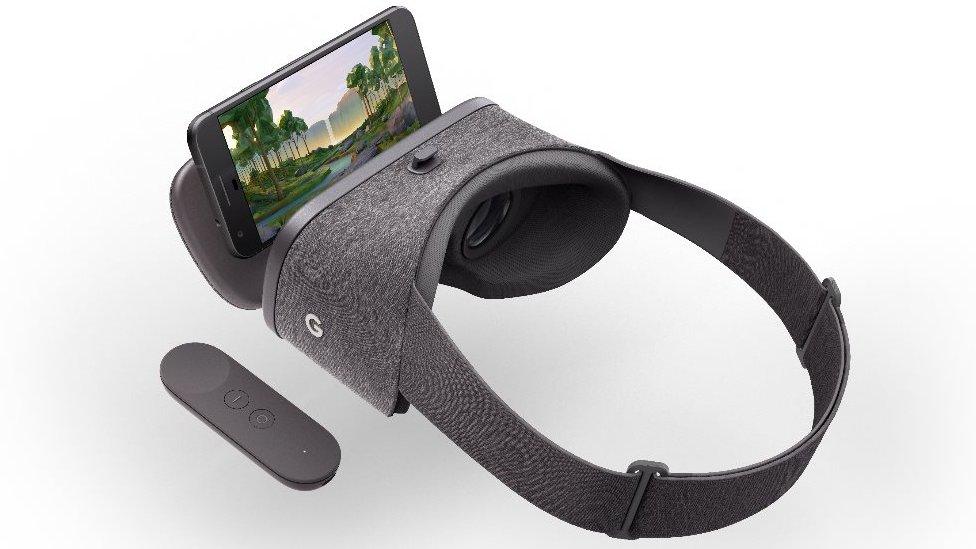
Compatibility with a lot of handsets should prove a good strategy
Google's Daydream virtual reality kit comes with a remarkable "two in one" feature.
Not only do you get an exciting virtual reality experience, but Daydream also gives off enough heat to keep your house warm throughout the winter.
Devices get hot, I get that, but the Pixel XL smartphone running a full throttle VR experience is something else all together - the McDonald's apple pie of gadgetry, strapped to your face.
It's a reminder, I think, of the strain we're putting our devices under to deliver the kind of experiences we demand in mobile computing.
And there is also a sense that when it comes to smartphone-powered VR, we've still got some way to go before the hardware can truly match our expectations.
As I found from playing around with Daydream this past week, small sacrifices mean it falls short of the immersive future promised by Google boss Sundar Pichai.
VR land grab
Daydream, first announced by Mr Pichai in May, goes on sale on Thursday.
The product is pretty simple: a pair of lenses housed in fabric-covered plastic, which comes with a smart little remote control that you'll use to control various aspects of your VR experience.
To get it to do anything, you'll need to add a crucial component - a smartphone.
In this case, I was using Google's new Pixel XL, but the plan is for Daydream to support a wide range of phones that may or may not be made by Google.
It's worth stressing that Daydream isn't designed to compete with the high-end virtual reality hardware we've seen hit the market this year.
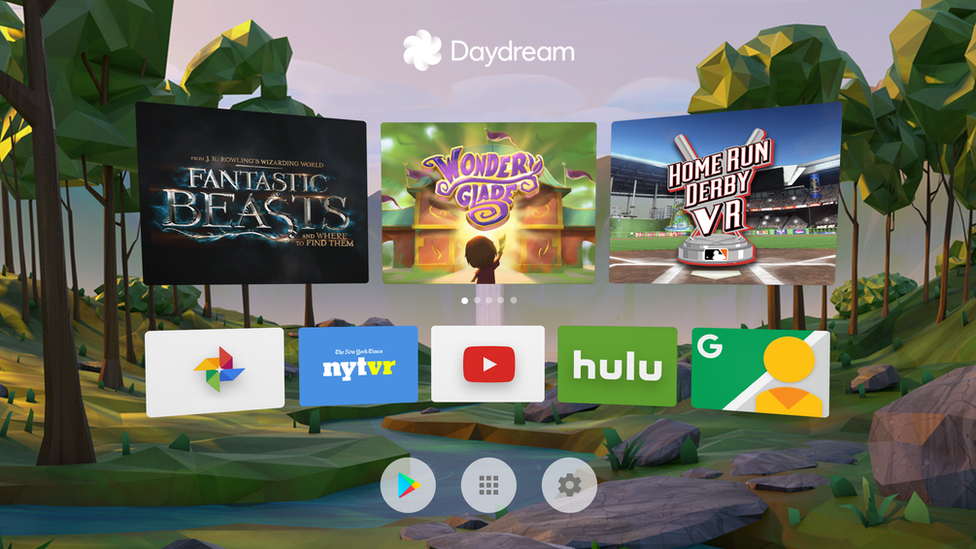
The market for creating an huge VR app store is wide open
Instead, the intention is to act as a sort of gateway drug to virtual reality - an experience that is "good enough" without breaking the bank.
Daydream is competing with Gear VR, a collaboration between Samsung and Facebook-owned Oculus that works on the same principle: you slot your phone into a cheap-ish empty headset, but with Gear VR it must be a Samsung device.
This race is so important for Google and Facebook as they are both utterly desperate to get ahead in the major new marketplace of flogging virtual reality apps and content.
Gear VR has a head start. You can already check out live sport such as NBA matches and settle in for virtual big-screen Netflix viewing, which is oddly enjoyable.
It's early days for Daydream, but there are promising signs that good content is on its way, mostly thanks to services that Google already owns such as Street View and YouTube.
The latter's 360-degree video offerings lack any actual interactivity, but do provide some breathtaking visuals without having to wait too long for content to download.
Fabricated
One of Google's goals with Daydream is to make something that doesn't look and feel overwhelmingly nerdy.
The headset is covered in a nice, light fabric that at least on the surface looks more comfortable than Samsung's plasticky Gear VR.
But once you put it on, you immediately notice Daydream's significant design flaws - problems that don't seem to have been created by hardware limitations but simply by bad decisions.
I'll start with the most serious. When you fire it up, chances are Daydream will be out of focus. Blurry images in VR are a terrible thing - it increases the already high risk of feeling disorientated or nauseous.
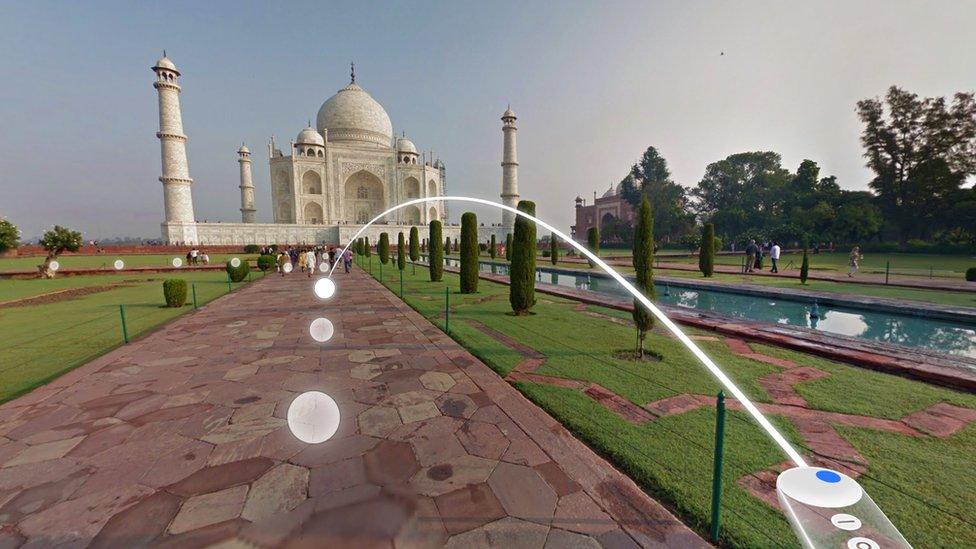
Google-owned services such as Street View are a major selling point of Daydream
On Gear VR, there's a focus dial on top of the device that gives you a few millimetres of adjustment space to sharpen things up.
But on Daydream there is nothing of the sort - you're instead required to shift the device around your forehead until you get something that works with your eyes.
The resulting position, in my case, wasn't as comfortable as it should have been.
Daydream's rigid shape seems to ignore that peoples faces aren't all the same.
For me, the headset didn't sit snugly over my nose, which meant a line of natural light crept up through the bottom at all times.
Flaws like this ruin the VR effect of being transported to a different world.
The illusion never has a chance to take hold.
This problem is made worse by Daydream's limited field of view.
You never get away from the feeling that you're viewing this virtual world through a small, restrictive circle.
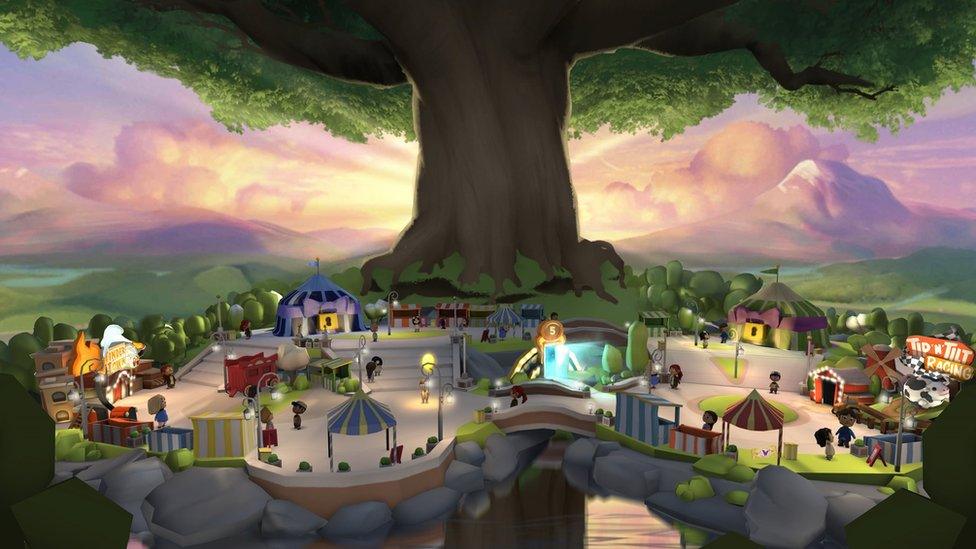
WonderGlade is a playful theme park experience that makes full use of the Daydream controller
That potential world is made smaller still due to Daydream's solid back.
With Gear VR, the phone's rear camera can be turned on to offer a sort of augmented reality that lets you look out into the real world while keeping the headset on.
But with Daydream, the phone is tucked into a little pouch, blocking the ability for the rear camera to see anything.
And as I mentioned, the Pixel XL gets extremely hot.
Wear it long enough and you'll really start to feel the heat, though Daydream doesn't fog up in the same way Gear VR does - a major plus there.
Tilt and roll
Where Google has got it very right is with its little controller.
You use it to interact with everything in Daydream, and it's a terrific bit of hardware that is instantly intuitive and delightfully flexible.
In WonderGlade, a game that plonks you in a cartoon theme park, the controller is used to full effect.
In one section, it's used to control a game of tilt and roll. In the next mini-game, it changes into a magic wand, then a fire hose, and then a putter.
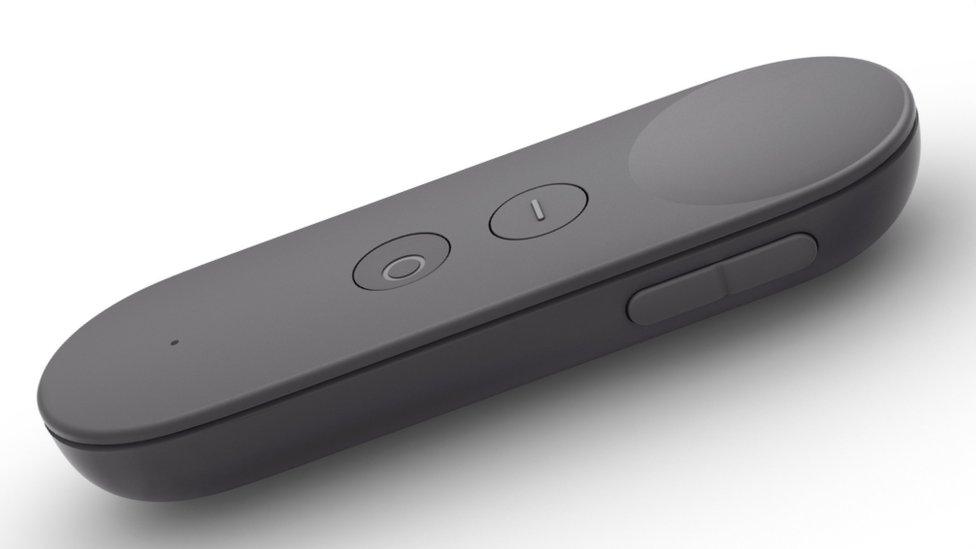
The controller is versatile, but suffers from frequent disconnections
It has a tendency to disconnect every now and then, which is a real frustration, but the amount of interaction it offers gives Daydream a big selling point over Gear VR, and even some of the high-end headsets.
People who want to use VR for gaming will naturally still want a wireless gaming controller. But for the vast majority of uses, the simple remote nails it.
Flawed but in front
I had higher hopes for Daydream when it was first announced in May. And I find it irritating that minor things, such as the focus adjuster, are missing and would have made a big difference.
But Google's strategy to make Daydream the entry level headset that supports a wide range of smartphones gives it an undeniable advantage over its rival.
We're still lacking a real killer VR app, and Daydream is already attracting bad ideas such as the Wall Street Journal's app, which mostly lets you read text and look at market data in VR - the most pointless adoption of technology since my grandmother used a tablet computer as a coaster.
But there are signals that truly groundbreaking applications will come in time.
The Guardian's Daydream app, for example, places you in a tiny cell in a US jail, a feeling of solitary confinement that no amount of written words could possibly emulate.
For most people, VR won't be something they discover via the high-end PC gaming set-ups required for the top experiences today. It'll be this cheap and cheerful option instead.
Right now the technology isn't quite there, but it's getting closer - and with Daydream, Google has gained an early advantage.
Follow Dave Lee on Twitter, external and on Facebook, external